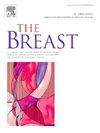乳腺癌的不平等:2022 至 2050 年全球统计数据
IF 5.7
2区 医学
Q1 OBSTETRICS & GYNECOLOGY
引用次数: 0
摘要
本研究根据 GLOBOCAN 的最新估计,评估了 2022 年至 2050 年全球乳腺癌发病率和死亡率的不平等情况。研究重点关注各大洲、各年龄组和人类发展指数(HDI)水平之间的差异。2022 年,非洲 40 岁以下(0.346)和 40 岁及以上(0.335)年龄标准化死亡率(世界)与发病率的正斜率值最高。这些数值与亚洲(0.085,0.208)、欧洲(0.002,-0.014)、拉丁美洲和加勒比地区(0.17,0.303)、北美洲(-0.078,-0.188)和大洋洲(0.166,-0.001)的数值形成鲜明对比。在两个年龄组中,较低的人类发展指数水平与较高的斜率值相关,反之亦然。对 2050 年的预测表明,乳腺癌的负担会显著增加,同时会持续存在不同的差距和差异。这凸显了在乳腺癌预防、早期诊断和治疗方面采取差异化战略的必要性。本文章由计算机程序翻译,如有差异,请以英文原文为准。
Inequality in breast cancer: Global statistics from 2022 to 2050
This study evaluates the global inequalities of breast cancer incidence and mortality from 2022 to 2050 with the latest GLOBOCAN estimates. It focuses on disparities across continents, age groups and Human Development Index (HDI) levels. In 2022, Africa shows the highest positive slope values of age-standardized rates (world) of mortality vs. incidence, both for those under 40 (0.346) and those 40 and older (0.335). These values contrast with those for Asia (0.085, 0.208), Europe (0.002, −0.014), Latin America and the Caribbean (0.17, 0.303), Northern America (−0.078, −0.188), and Oceania (0.166, −0.001). In both age groups, lower HDI levels are correlated with higher slope values and vice versa. Projections to 2050 indicate significant increases in the burden of breast cancer, with persistent yet varied disparities and differences. This highlights the need for differentiated strategies in breast cancer prevention, early-stage diagnosis, and treatment.
求助全文
通过发布文献求助,成功后即可免费获取论文全文。
去求助
来源期刊

Breast
医学-妇产科学
CiteScore
8.70
自引率
2.60%
发文量
165
审稿时长
59 days
期刊介绍:
The Breast is an international, multidisciplinary journal for researchers and clinicians, which focuses on translational and clinical research for the advancement of breast cancer prevention, diagnosis and treatment of all stages.
 求助内容:
求助内容: 应助结果提醒方式:
应助结果提醒方式:


